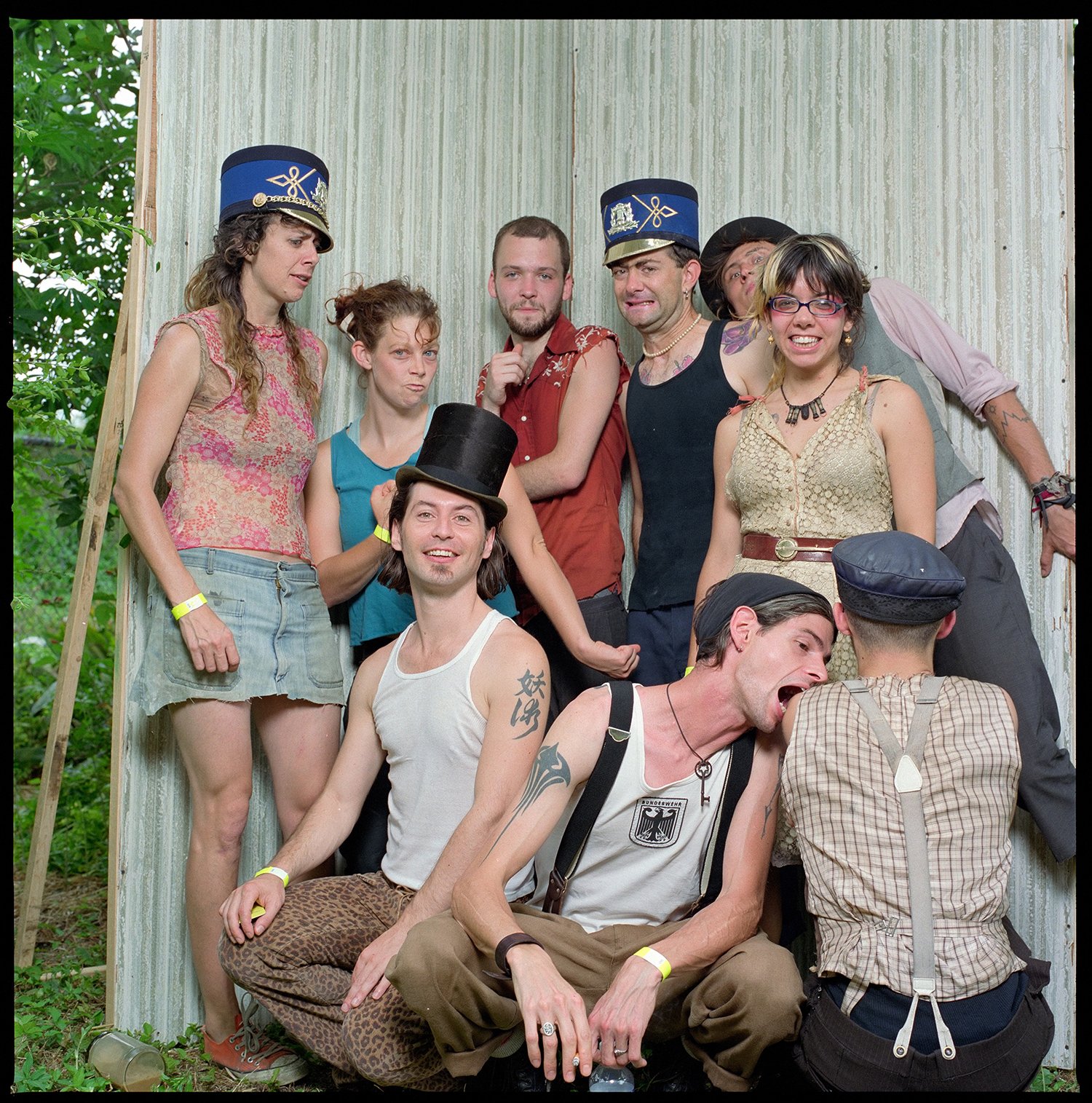Voodoo: Zack Smith's Quiet Place

For the last few years, Zack Smith's photo booth has been a still place amidst the buzz and roar of Voodoo.
Photographer Zack Smith loves to set up photo booths and document not the moment but the people who were in it. In 2007, he made one in Carrollton Station with a stationary camera pointed at a very well-lit box into which fans put their faces for two shots - one a big smile and one dead serious. Caddywhompus was playing, and he wanted a record not of the bands but of the new audience that supported them.
Smith only used his light box a few times, but he's found something resonant in the photo booth concept. He sets up booths at Chaz Fest each year, and since 2008, he has manned one backstage behind the Preservation Hall Stage at Voodoo. A collection of his Voodoo portraits, Exit Stage Right, goes on sale today, and selected photos from the book are on display in Preservation Hall until November 26.
The idea for the first Voodoo booth came from Preservation Hall's artistic director, Ben Jaffe. "He hired me to shoot a press photo for Preservation Hall and we had a great time doing it," Smith says. "We started talking about portraits and whatnot. He threw the idea out there and we ran with it." That year, he erected a V-like structure to mimic the corner of a room, and it was lined with a wallpaper designed for the occasion that merged the Preservation Hall and Voodoo logos.
Because the Hall was in the midst of a rebranding effort, adding The New Orleans Bingo! Show to the family and experimenting with new ways to present New Orleans music, from the start Smith's camera caught a broad spectrum of the New Orleans music community including established artists such as Deacon John, more avant-garde combos including The Noisician Coalition, and people on the periphery of music including fans and writers (Smith has shot me twice, though neither appears in the book).
"The whole thing about that portrait backdrop is that it's a quiet place for musicians," Smith says. In the shots, you see moments of stillness, particularly in the years when he let trees it City Park serve as his backdrop. A portrait of Anders Osborne shot the year after the release of American Patchwork stands out as he looks very present and very aware of where he was with his life. Smith sees the quietness of the space in two photos in the book of Helen Gillet and Clint Maedgen as they were becoming a couple. In one, she stands by herself playing his sax.
Photo booth portraits were a natural extension of Smith's photographic interests. He had made a name for himself shooting live shows, placing shots in most of the major magazines, but the growing control artists exerted over the pit and the cattle-like enclave it had become took much of the fun out of it. At the same time, "my modes of creation were changing," he says. "My interest in composing well-composed visuals were changing. My art was changing. I wasn't surprised or excited by the new stuff I was getting."
By shooting yearly, he saw narratives. "It's funny to see the Preservation Hall Band change," Smith says of the group that he shoots yearly. "Those guys, you think, are always in the band, but guys change out."
Some photos draw you in as you wonder about the moment. In 2008, he shot Walter "Wolfman" Washington and Marva Wright together, holding hands and laughing. " If you asked me what they were talking about a month after, I probably could have told you. Now I have no idea, Marva's not here and I don't know if Walter remembers."
This year, Smith's rebuilding the V-shaped booth of 2008, but with wallpaper he found in an old warehouse. "The coolest vintage wallpaper you want to put your hands on," Smith says. "I got 20 rolls. Some 3-D basketball players from the '70s with the ankle-high socks and the shorts." He's putting the wallpaper on some sheets of thin plywood with hooks on the back so he can put them up and take them down. "Re-wallpaper - put another one on. So I'm not stuck with something."
For Smith, the inclusiveness of Exit Stage Right makes a larger statement. "It's a little bit of everybody," he says. "It shows that this stage, this city aren't just one thing."
Related Voodoo Stories
Thomas Dolby and Life After Science






